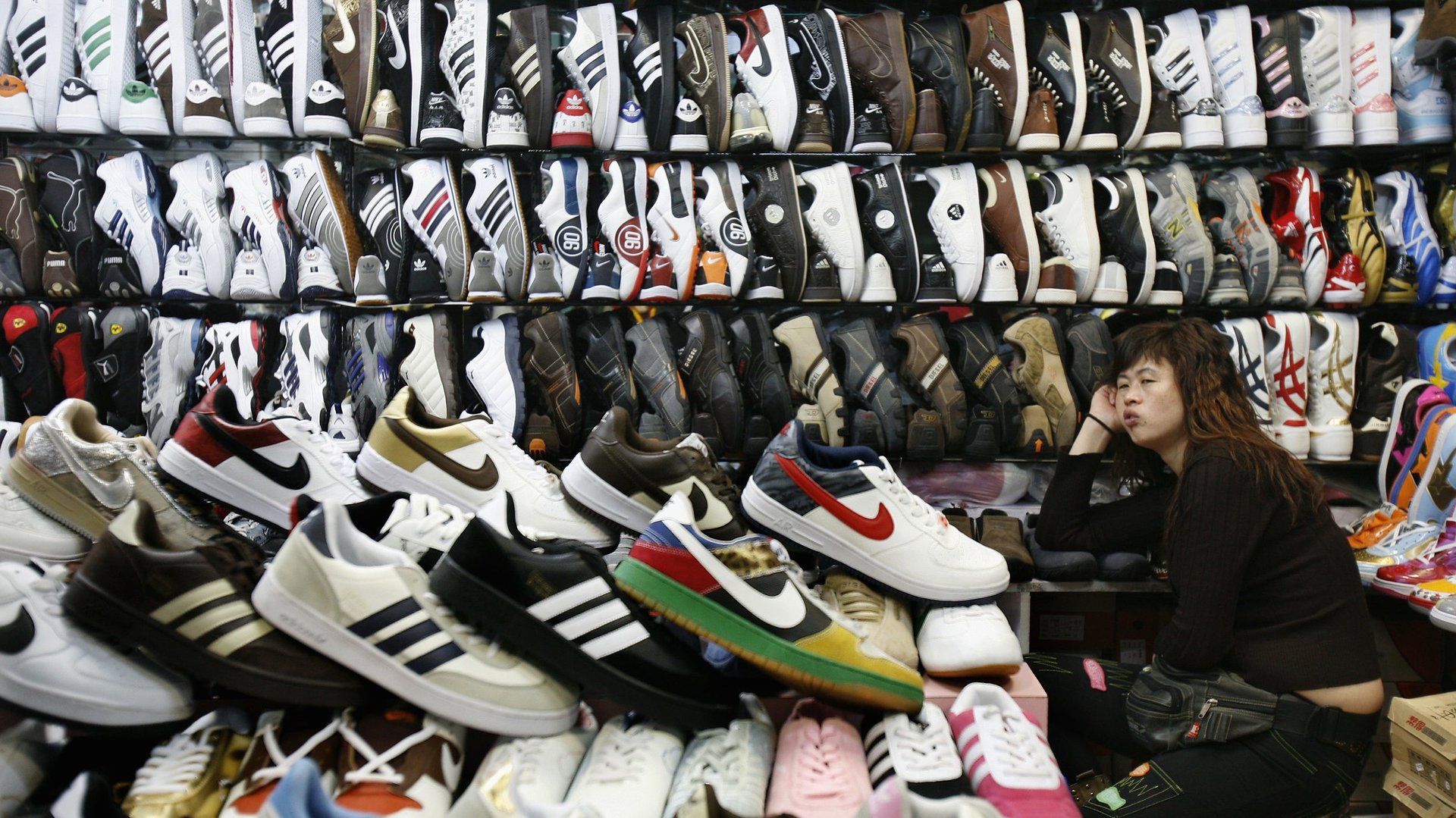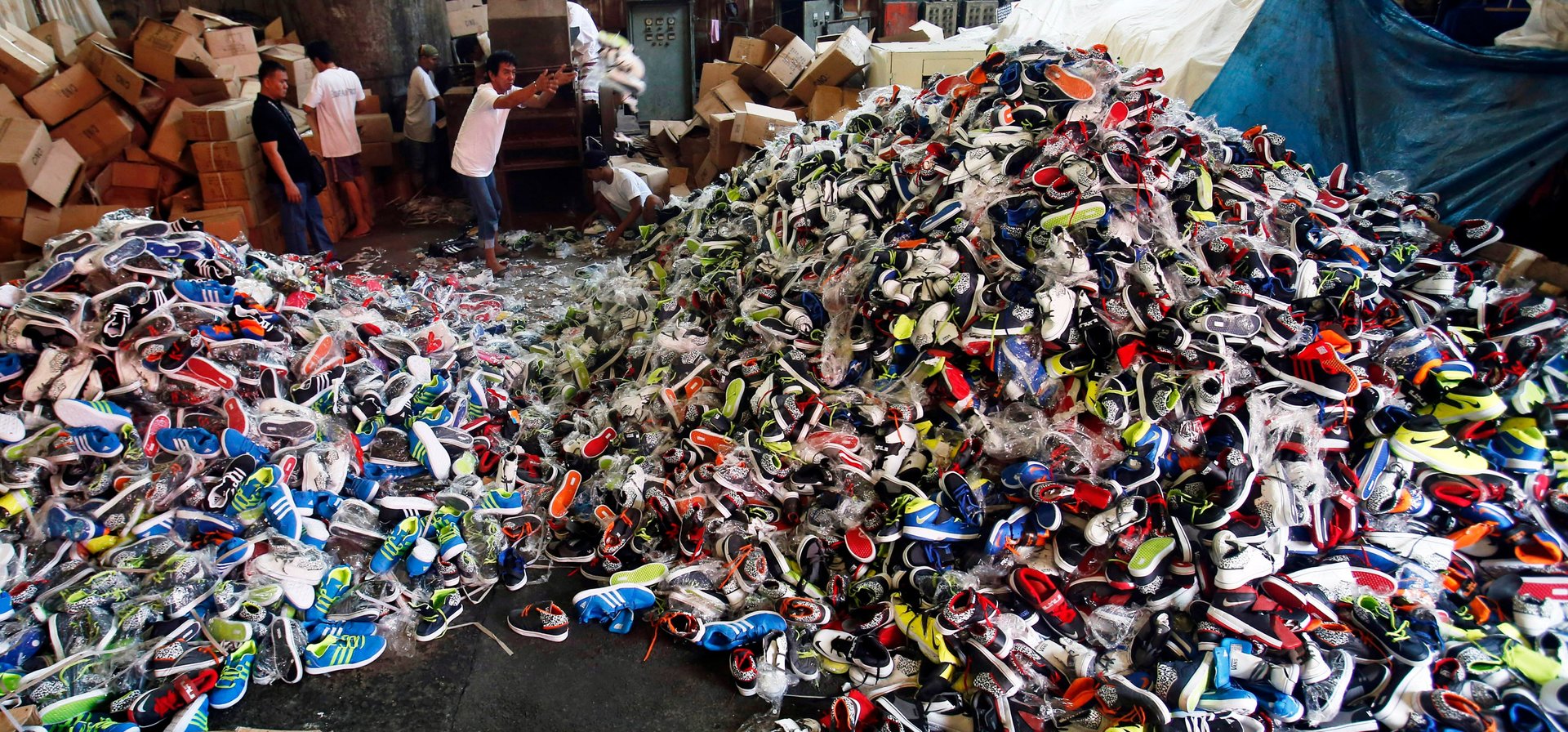The world’s most counterfeited brand isn’t a luxury label
Maybe you associate knockoffs with products such as handbags, watches, and jewelry. And indeed, Louis Vuitton is a favorite target of counterfeiters, as is Rolex.


Maybe you associate knockoffs with products such as handbags, watches, and jewelry. And indeed, Louis Vuitton is a favorite target of counterfeiters, as is Rolex.
The numbers suggest it’s actually Nike that gets copied more than any other brand in the world, according to a major new study by the Organisation for Economic Co-operation and Development (OECD).
The report, “Trade in Counterfeit and Pirated Goods: Mapping the Economic Impact,” which the OECD calls the most rigorous to date, is based on about half a million customs seizures around the world between 2010 and 2013. It estimates that counterfeits had a total value of $461 billion in 2013, the most recent year included in the report. That’s about the same value as the illegal drug trade, and represents 2.5% of global imports, the OECD says.
The OECD pegged the US as the country whose IP rights were most infringed, and noted that fakes appear in every sector. Footwear was the most counterfeited category.
The report notes that specific brands that “seem to be more intensely targeted by counterfeiters” include Rolex, Ray Ban, Louis Vuitton, and Nike, which was previously identified as the most counterfeited brand globally in a 2014 report (pdf) by the World Customs Organization. “This observation corroborates the results of a previous report published by the WCO, which identified Nike as the most frequently counterfeited brand in 2013,” the OECD report states.
In an email, the OECD said it hasn’t looked into the specific reasons why Nike is so commonly knocked off, but there are a number of reasons counterfeiters go after certain items, including Nike sneakers. “Desirability of a given product is just one of them,” a spokesperson says. “Others include: technical ease of copying (luxury cars might be more desirable than Nike shoes, yet it is technically easier to fake a shoe), assessment of potential demand for a fake (is anyone willing to buy a fake Rolls Royce?) or availability and effectiveness of sales channels (flea markets and many e-stores can be (mis)used to sell fake Nikes).”

Those fakes can end up on two different markets. In the primary market, customers are deceived into buying a knockoff. But there’s also a secondary market, where customers knowingly buy fake products for a cheaper price. The OECD said in Nike’s case the market the fake ends up on depends on the country. In Northern Europe, “counterfeiters tend to deceive consumers” on the primary market. In Southern Europe, the obvious Nike fakes “dominate.”
Nike said in a statement that it “aggressively protects its brand and actively engages with law enforcement agencies and Customs globally to stop counterfeit product reaching consumers.” It points out that counterfeits are likely to be of inferior quality.
To nobody’s great surprise, China was the source of most fakes. Alibaba, the country’s—and by some measures, the world’s—largest e-commerce company has been engaged in several legal battles over the presence of fakes across its site.
It’s a major problem for several industries. Up to 5% of goods that the European Union imported were fakes, according to the OECD. A separate report has estimated that Europe’s fashion industry loses 10% of its sales to knockoffs.